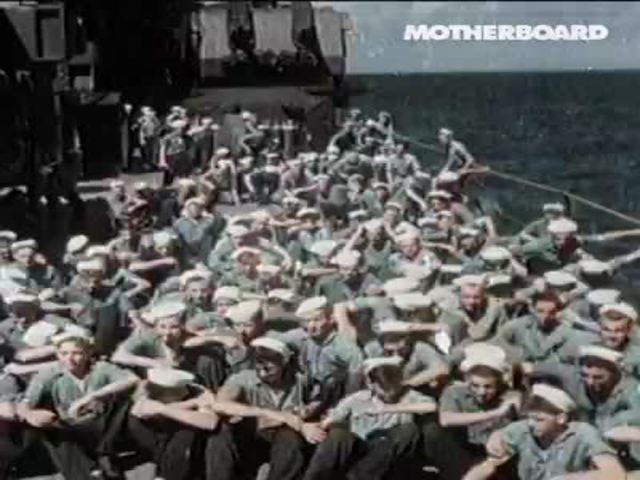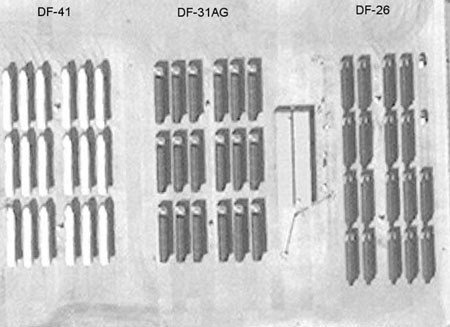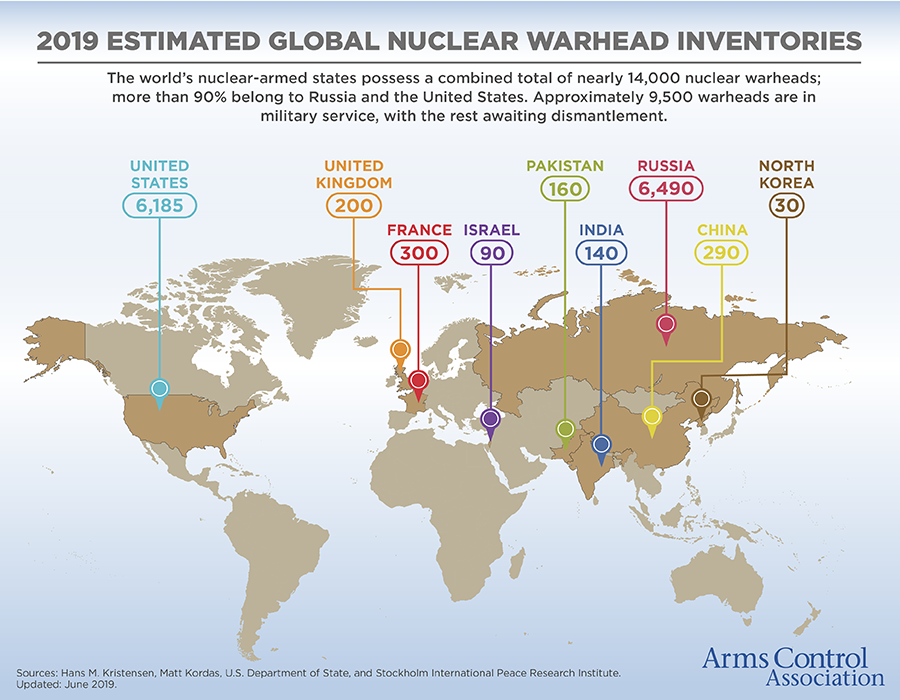Install the app
How to install the app on iOS
Follow along with the video below to see how to install our site as a web app on your home screen.
Note: This feature may not be available in some browsers.
You are using an out of date browser. It may not display this or other websites correctly.
You should upgrade or use an alternative browser.
You should upgrade or use an alternative browser.
Ydinaseet
- Viestiketjun aloittaja Teräsmies
- Aloitus PVM
No sanopas muuta, ei Suomen ydinaseissa ylipäätään järkeä olisi...
Ehkä Ranskan Plutonin tapaan varoituslaukaus ammuttaisiin taktisella ohjuksella jolloin kohteena voisi olla maahan tunkeutuva vihollisen joukko tai esim. joku lentotukikohta. Tässä tapauksessa paras taistelukärki olisi neutronipommi jolla saataisiin aikaan vaikutusta mahdollisimman pienellä säteilyjäljellä. Koko voisi olla esim 2kT tms, eli niin pieni ettei se aiheuttaisi suunnatonta tuhoa ja olisi käytettävissä moneen eri maaliin, mutta sellainen että sillä saa aikaiseksi sienipilven uutislähetyksiin.
Toki vielä coolimpi vehje varoituslaukauksen ampumiseen olisi ydinkranaatteja ampuva raskas kanuuna...
Tai Davy Crockett...
ajs178
Respected Leader
Doktriini jossa ydinaseiden käyttö on lähes pakollista, ei ole kovin fiksua. Tämän takoivat Yhdysvaltalaiset Saksalaisten päähän kylmän sodan aikana, kun sakut halusivat hullun kiilto silmissään davy crocketteja joka prikaatille korvaamaan konventionaalista tykistöä. Se olisi käytännössä pakottanut aloittamaan ydinsodan samalla tasolla kun muuten olisi aloitettu tykistökeskitykset.
Sen sijaan pienen Israelin puolustusdokriini jossa ydinpelote on MAD strategian mukainen, on toimivampi. Puolustus rakennetaan kestämään konventionaalisin keinoin lähes mitä tahansa vastaan lyödäänkin. Eikä ydinaseita käytetä vaikka tappioita tulisi, ja alueita menetettäisiin.
Vasta tilanteessa jossa täydellinen tuhoutuminen vaikuttaa varmalta, ei ole enään mitään jäljellä, varmistetaan ettei vihollinenkaan voita. Siksi Israelilla on TEL laukaisimia, sukellusveneestä laukaistavia, lentokoneesta laukaistavia, ja hyvin vähän siiloista laukaistavia ydinaseita. Latausten kokonaismäärä on huomattavan pieni, verrattuna toimitustapojen määrään/hajautukseen. Tällä varmistetaan että vaikka sota on jo hävitty, ja osa laukaisualustoista tuhottu, on viimeisenä päivänä yhä kyky tuhota vihollinen itsensä mukana. Ja Israelin viholliset tietävät tämän.
Sopisi Suomellekin.
Kannattaa lukea Daniel Ellsbergin kirja ”The Doomsday Machine”. Siinä hän paljastaa, että 1950- ja 1960-luvulla USA:lla ei ollut minkäänlaisia sotasuunnitelmia Varsovan liiton kanssa käytävään sotaan, jossa ei olisi käytetty ydinaseita. Ns. General War Plan sisälsi vain ydinaseskenaarioita. Ydinaseiden käyttöpäätös oli vieläpä delegoitu yksittäisen tukikohdan komentajalle tilanteissa, joissa yhteydet komentoketjussa ylöspäin on poikki. Ja tietyissä tilanteissa jopa yksittäiselle lentäjälle, jos tämä on noussut ydinpommilla varustetulla koneella ilmaan valmiutta nostettaessa ja siirtyy hyökkäyksen lähtöaluelle, niin jos hän sinne saavuttuaan ei saa enää yhteyttä tukikohtaan ja hyökkäyksen peruutuskäskyä, niin oletetaan, että Neuvostoliitto on tuhonnut tukikohdan, ja hyökkäys käynnistyy lentäjän päätöksellä. Tilanne oli jopa niin absurdi, että Neuvostoliiton hyökkäys Euroopassa olisi aiheuttanut automaattisesti myös Kiinan kaupunkien tuhoamisen ydinaseilla. Tämä siis ennen aikaa mannertenvälisten ohjusten ja lähinnä lentokoneilla toimitettavia ydinpommeja arsenaalissa. Daniel Ellsbergistähän tuli aikoinaan ensimmäinen ”pilliin viheltäjä”.Aika kylmäävää luettavaa.
tulikomento
Supreme Leader
Hyvä yhteenveto 1940-luvun atomipommiohjelmista ja siitä miksi Saksa ei onnistunut koskaan kehittämään ydinasetta.
https://www.defenseone.com/ideas/20...s-against-low-yield-slbm/157925/?oref=d-riverLow-yield nuclear weapons are center stage in the debate over the nascent 2020 defense authorization act. The House of Representatives and the Senate have competing positions on the low-yield submarine-launched ballistic missile, or L-SLBM. While the United States is moving to lower the yield on a small number of W-76 warheads, debate on this force structure change has continued since the release of the Nuclear Posture Review in early 2018. MIT political scientist Vipin Narang recently observed there are two camps of opposition to L-SLBM: those who disagree with having low-yield nuclear weapons in general, and those who support having them but believe the risks of L-SLBM outweigh the benefits. Each camp raises a different set of issues that deserve a closer look.
Opposition to low-yield nuclear weapons is about whether the United States should retain limited nuclear response options or instead rely solely on high-yield weapons. A recent article by Representative Lieu and Senator Markey reflects this perspective. They argue that limited options are “irresponsible and dangerous.” Their premise is that nobody knows whether a nuclear war would stay limited, which of course is true.
Yet their argument presumes that the purpose of U.S. low-yield weapons is to enable the United States to use nuclear weapons first, when in fact the principal role of these systems in U.S. strategy is to deter an adversary from using nuclear weapons first against allies and U.S. forces fighting abroad. Thus, Representative Lieu and Senator Markey sidestep the central nuclear deterrence challenge facing the United States: what happens if the country the United States is fighting uses a small number of low-yield weapons? Should the United States adopt a policy of responding with high-yield nuclear weapons to any nuclear attack, even “one atomic weapon of any size”? Representative Lieu and Senator Markey do not explicitly take this position, but that is the logical culmination of their argument that “preparing for limited nuclear war is folly.”
tulikomento
Supreme Leader
miheikki
Greatest Leader
tulikomento
Supreme Leader
BBC:n radioteatterin draama muutaman vuoden takaa. Aiheena on brittien ydinasekomentoketjun toiminta. Juuri virkaanastunut uusi pääministeri joutuu aina kirjoittamaan henkilökohtaiset kirjeet kuninkaallisen laivaston ohjussukellusveneiden kapteeneille. Kirjeessä pääministeri antaa ohjeensa siltä varalta että joku vihamielinen valtio olisi iskenyt Britanniaan ja onnistunut tuhoamaan maan hallituksen. Ajankohtainen aihe nyt kun Boris Johnson astui juuri virkaansa.
https://www.wired.co.uk/article/russia-explosion-nuclear-rocket-physicsRussia's facing another potential nuclear crisis. Following last week's explosion at the military base in Nyonoksa, in north-west Russia, residents are preparing for a minor evacuation.
At the center of the problem appears to be the nuclear rocket engine 9M730 Burevestnik – known as SSC-X-9 Skyfall to Nato. The accident on Thursday caused a 30-minute spike in radiation levels in the nearby Severodvinsk; seven people have reportedly died.
So what do we know about the rocket behind this destruction? Given the secretive nature surrounding military technology, it's impossible to know exact details of what the engine is capable of but analysts can pick up some clues from what has been disclosed.
What we concretely know about the Burevestnik are only the facts Vladamir Putin gave on March 1, 2018, during an address to the Federal Assembly – that the Burevestnik is a nuclear-armed, nuclear-propelled cruise missile.
“The Burevestnik is technically an intercontinental cruise missile,” says Mathieu Boulègue, a research fellow on the Russia and Eurasia programme at Chatham House. “It's a cruise missile, which means two things: it flies fast and it flies low, in comparison to an intercontinental ballistic missile that's somewhat slower on re-entry but flies very high.”
The idea that the missile’s range is unlimited is a slight misnomer, Boulègue explains. “The Soviet Union used to develop these cruise missiles with a theoretical range of about 3,000 kilometers,” he says. “So when they say unlimited, it technically means over 3,000 kilometers.” In essence, the Burevestnik would offer persistence and range far greater than anything on the market – it would fly at a very low altitude and relatively great speed for an amount of time over the existing ranges of that category of cruise missile.
The Burevestnik may yet play a part in these political negotiations, says Barrie. “Given where we are in terms of arms control at the moment, is [the Burevestnik] something that the Russians might throw on the table as an arms control card with the US in some future negotiation?”
tulikomento
Supreme Leader
Asiaa NL:n ensimmäisestä ison mittakaavan ydinasetestistä. 50-luvun puolivälin tienoilla Totskojessa Uralilla 45 000 sotilasta otti osaa sotaharjoitukseen jossa räjäytettiin ydinpommi maajoukkojen tulitukena.
tulikomento
Supreme Leader
Maailman radioaktiivisin tankki ? Brittien ydinasetesti Australiassa 50-luvulla.
The 70th Anniversary of PRC Military Parade will have a demonstration of its strategic strike ability.
There will be a strategic strike division contains seven missile squads:
#1 - DF-17 x16
#2 - DF-100 x16
#3 - DF-26 x16
#4 - JL-2A x16
#5 - DF-31AG x16
#6 - DF-5B x4
#7 - DF-41 x16
DF-41(?)
DF-31AG menossa kohti paraatipaikkaa.
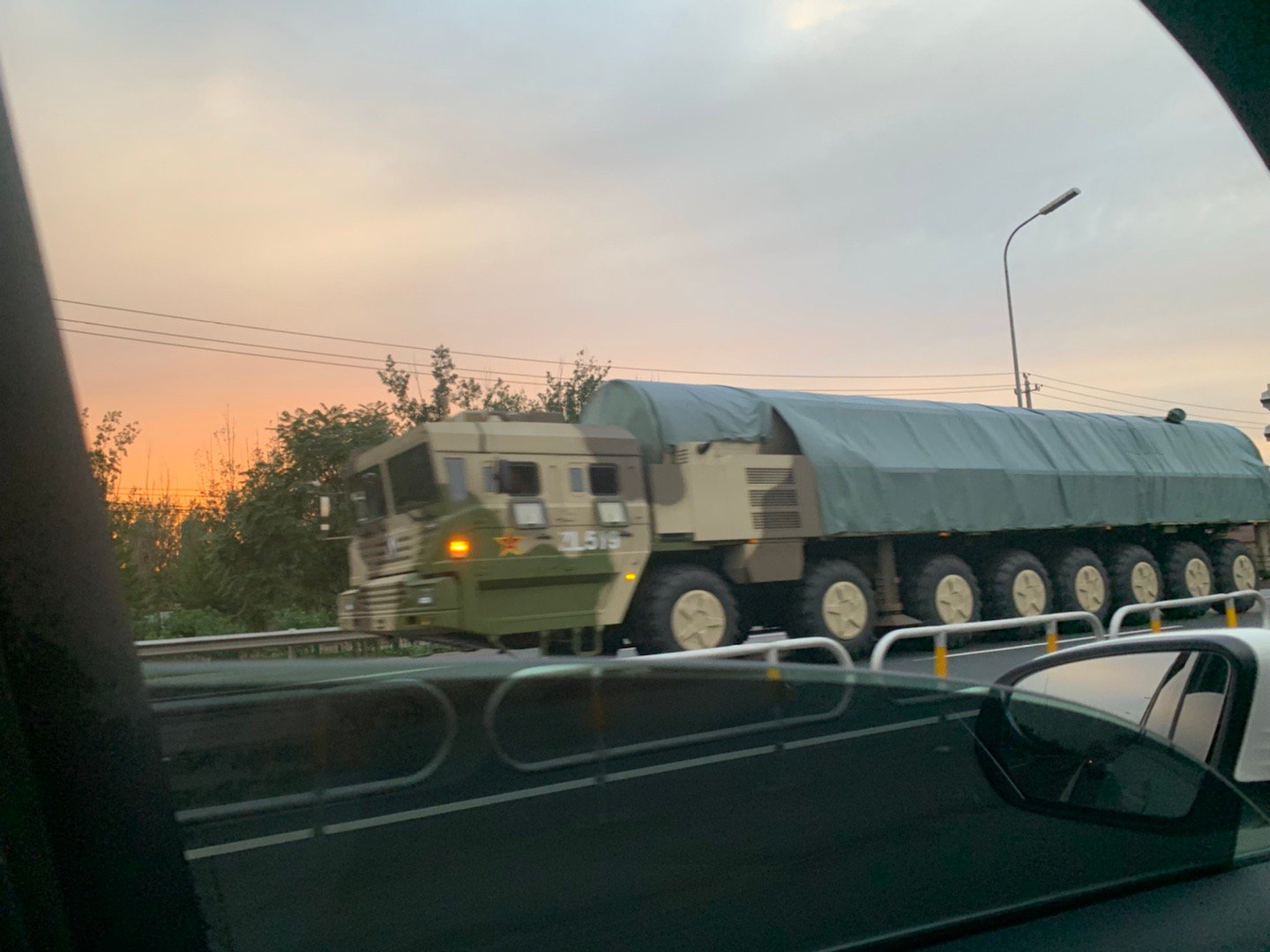
Nestemäistä polttoainetta käyttävän DF-5B ohjuksen ensimmäinen(?) rakettivaihde.
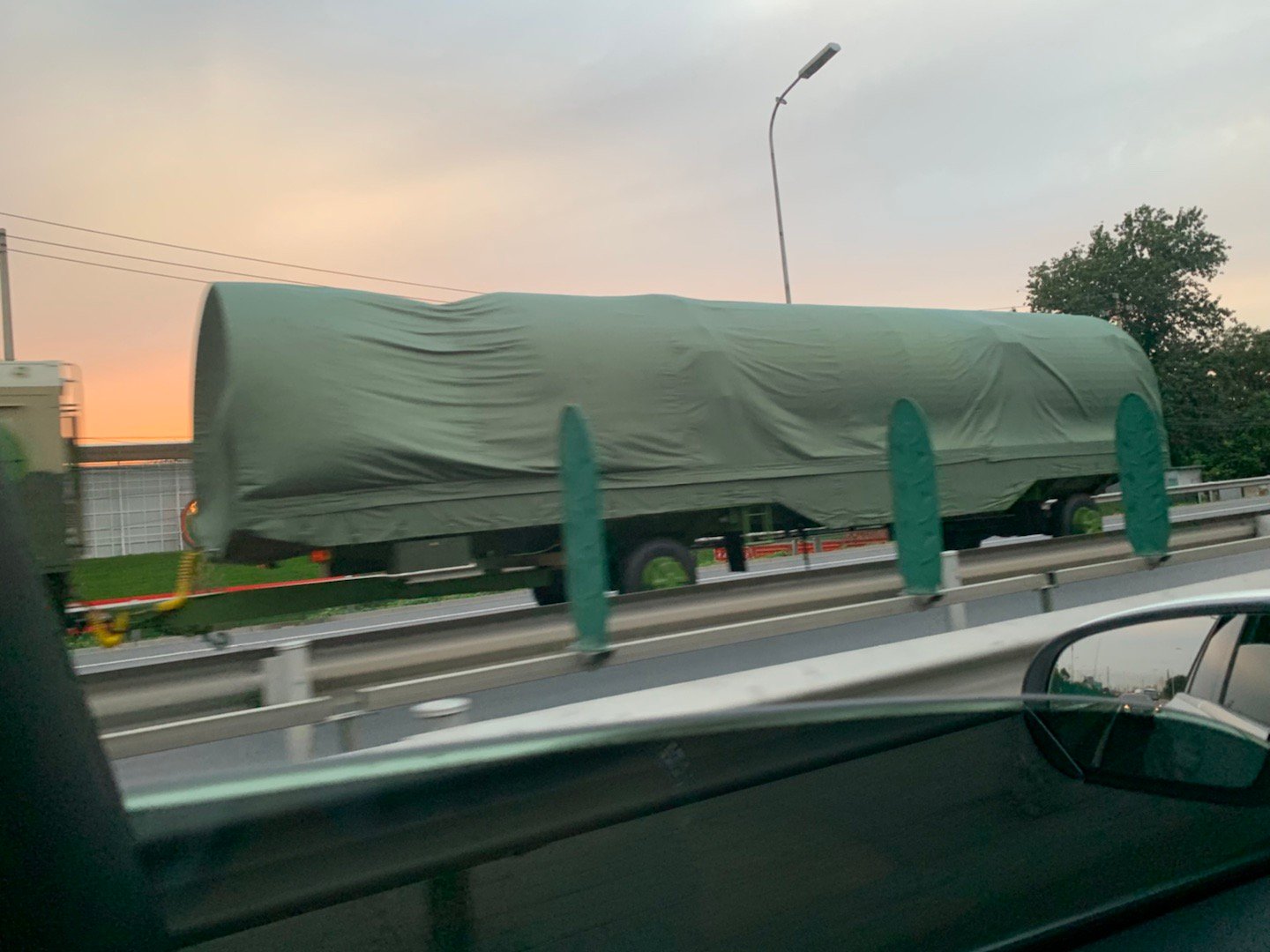
Toistaiseksi tunnistamaton ohjus (DF-17?).

?
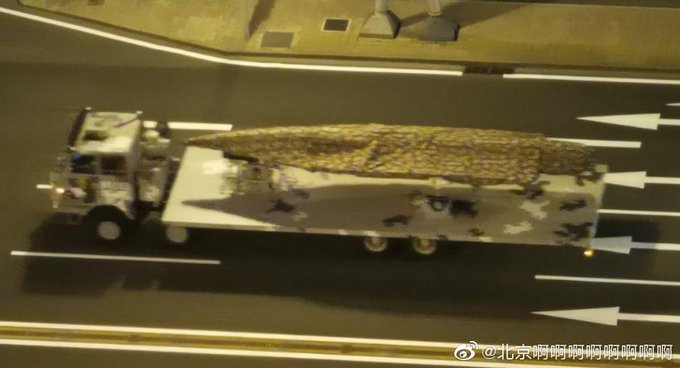
Tämä näyttää jonkinlaiselta miehittämättömältä sukelluspaatilta.
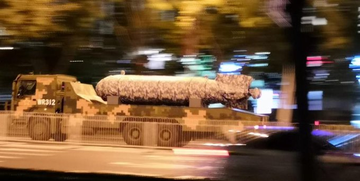
https://www.huffingtonpost.co.uk/en...ear-war-trump-nsa_us_5d7b9809e4b03b5fc88212fdPresident Donald Trump’s acting national security adviser, former Reagan administration official Charles Kupperman, made an extraordinary and controversial claim in the early 1980s: nuclear conflict with the USSR was winnable and that “nuclear war is a destructive thing but still in large part a physics problem.”
Kupperman’s suggestion that the U.S. could triumph in a nuclear war went against dominant theories of mutually assured destruction and ignored the long-term destabilizing effects that such hostilities would have on the planet’s health and global politics.
Leaderwolf
Respected Leader
Jos kaikki menee nappiin niin kyllä, täysimittainenkin ydinsota on voitettavissa jos pystyy estämään tarpeeksi suuren osan vastustajan laukaisuista, tai osumista. Mutta silti jää jäljelle hiljalleen maapallon ylle levittyvä ydinlaskeuma? Eli mitä jäisi jäljelle voittajalle jonka kaupungit ovat ehjiä, mutta tyhjiä, "onnekkaiden" istuessa maan alla vähintään kymmeniä vuosia, ja loppujen maatessa perheineen itsemurhan tehneinä kodeissaan.
Ihminen..

Jos kaikki menee nappiin niin kyllä, täysimittainenkin ydinsota on voitettavissa jos pystyy estämään tarpeeksi suuren osan vastustajan laukaisuista, tai osumista. Mutta silti jää jäljelle hiljalleen maapallon ylle levittyvä ydinlaskeuma? Eli mitä jäisi jäljelle voittajalle jonka kaupungit ovat ehjiä, mutta tyhjiä, "onnekkaiden" istuessa maan alla vähintään kymmeniä vuosia, ja loppujen maatessa perheineen itsemurhan tehneinä kodeissaan.
Ihminen..
Miksi ihmisten pitäisi asua kymmeniä vuosi maan alla? Ydinaseiden laskeuma on valtaosin hyvin lyhytikäistä.
https://survivalblog.com/current-nuclear-threat-part-1-john-m/Mutually assured destruction. This phrase has long helped prevent direct armed conflict between Russia and the United States. Although many proxy wars have been fought over the past 70 years, since the Soviet Union developed nuclear weapons, both sides have been careful not to start a direct conflict that could escalate toward a nuclear exchange.
During the Cold War, there were many moments that brought us close to nuclear war. During the Cuban Missile Crisis in 1962, the world held their breath as the U.S. faced off with the Soviets over their attempt to place nuclear weapons in Cuba. Many other events taht brought us close to war were less known, publicly. They were kept classified until 25 years later. One such event was in 1979, when a training tape was accidentally loaded to NORAD computers, leading to the military believing that a launch had occurred. Another event in 1983 involved a Soviet satellite error that misidentified five missile launches from the U.S. Many other accidents have occurred, some which have been made public, and others which have been kept secret.
When the Cold War ended in the early 1990s, the world abreathed a collective sigh of relief. The only remaining fear was that a former Soviet state might lose control of nuclear weapons that still remained in their new countries. But the past few years have reawakened fears of nuclear exchanges with Russia or other nations.
Soon after the U.S. developed nuclear fission bomb weapons, the Soviet Union also developed similar weapons. [JWR Adds: This was based on Manhattan Project technical data provided by American spies Julius and Ethel Rosenberg.] The United Kingdom, France, and China all soon had weapons of their own. The United Nations helped promote the Treaty on the Non-Proliferation of Nuclear Weapons (NPT) between 1965 and 1968. However, after the signing of the NPT, Pakistan, India, and, most recently, North Korea developed their own nuclear weapons. Israel has maintained a status of deliberate ambiguity as to whether or not they have nuclear weapons. Despite the NPT, Iran has also had a program, but has not yet produced nuclear weapons. Other fears remain as to whether rogue actors, such as terrorists or other nations, might acquire weapons and use them.
Despite recent fears, it is unlikely that Russia or China would directly attack the United States or their allies with nuclear weapons. Despite great reductions in nuclear weapons since the 1980s, the threat of mutually assured destruction remains a sufficient deterrent. Pakistan and India are primarily only a threat to each other. Israel has nuclear weapons only as a deterrent against their neighbors, such as Iran, to prevent them from making a full-scale attack.
North Korea Added to the Mix
North Korea’s recent acquisition and testing of nuclear weapons and missiles to deliver such weapons has become a great concern of the United States. Kim Jong-Un has made numerous threats. Historically, these threats have been part of an effort to obtain concessions and aid from the United States. North Korea has struggled to feed their people and threats have brought concessions in order to maintain peace.
While President Donald Trump was not open to giving aid directly to North Korea, he was able to open negotiations with Kim Jong-Un, the first negotiations between the two countries’ presidents since the cessation of fighting in the Korean War. While these peace talks initially ended North Korea’s nuclear testing, they have not yet ended their nuclear program entirely. Most of North Korea’s weapons have not yet proven reliable enough for full scale operations. North Korea’s arsenal might only harm the United States, but the U.S. would surely annihilate North Korea in retaliation if they ever attempted an attack on the U.S. or their allies.
So, what fears of nuclear weapons remain? Clearly, the threat of an open nuclear exchange between the U.S. and Russia or China remains, but it is unlikely. So the most likely threats remain from North Korea, Iran, or terrorist organizations.
North Korea, Scenario 1
Since the division of the Korean Peninsula in 1945 and the subsequent Korean War, there has long been a desire on both sides to see an eventual reunification. U.S. troops stationed in South Korea have helped to discourage any potential invasions from the north. Since the end of the Korean War Conflict in 1953, there have been various skirmishes back and forth across the Demilitarized Zone (DMZ), which was established with the armistice. Contrary to common understanding, the Korean War did not actually end with a treaty, but is only under an armistice that declared a cease-fire. Technically, the war has not ended, only the fighting.
If Kim Jong-Un wanted to push for a reunification under North Korean rule, implemented by a invasion of South Korea, nuclear weapons could give him the advantage to do so. Such an engagement would be risky, likely causing massive casualties in his own country. But nuclear weapons are likely the only way he could make such a move. This outlines a possible scenario.
Their first step would involve launching a strike against the continental United States. This would require only a couple of well-placed missiles into the upper atmosphere, causing an electro-magnetic pulse (EMP) that would bring down the U.S. electrical grids. This would not initially cause massive casualties, although many who are dependent on medical life-support systems would die quickly. However, as has been discussed in many EMP scenarios, there would follow several massive die-off events within the U.S., leading to an estimated death of 90% of the population within a year. This attack would cripple the United States and much of the military would be occupied with recovery efforts at home.
U.S. retaliation would likely be swift, so the next steps would have to occur in rapid succession after the EMP strike to employ North Korean forces before they were destroyed by U.S. bombers and missiles. One option would be to get protection from China or Russia, which will be discussed in the next section. But, acting on their own, North Korea would have to also launch successive attacks on U.S. bases in Japan and South Korea, in order to eliminate the possibility of counter-attack as quickly as possible. Additionally, an attack on Seoul and Tokyo would cripple those two countries’ leadership, allowing North Korean troops to begin ground attacks on South Korea.
The successive attacks on U.S. bases would have to be done immediately, probably before the initial launch against the continental U.S. had detonated, or shortly thereafter. This strike would also have to include bases such as Guam and bases in Hawaii. Timing so that all strikes occurred simultaneously would be most effective, but difficult, depending on North Korea’s level of technology.
The ground and naval invasions of South Korea would have to be timed so that they begin before the dust settles from the initial strikes. Too soon, and North Korean troops are at risk of being destroyed by their own weapons. Too late and they risk annihilation from U.S. retaliatory strikes.
Without a major military resistance, North Korean troops would be able to push south and take the entire peninsula. A strike on Seoul, either in the form of a a high altitude EMP airburst or a groundburst nuclear strike, would leave South Korea leaderless and ripe for a takeover.
President Kim would have to take immediate shelter and allow his troops to carry out their invasion without his direction. He would need a hidden bunker where he could remain until all U.S. strikes ceased. Once this all happened, he would then be able to re-emerge and resume control.
Once President Kim were to take the entire peninsula, he could begin negotiating a settlement with the U.S. His negotiations might include Japan, but he would have the advantage of the U.S. military having to maintain peace and restore order within their continental borders. Many deployed units would be required to return home to provide support.
While North Korea would likely incur massive losses in their own territory, the gained territory in the south might be worth the gamble. The Kim regimes have long shown a disregard for the welfare of their own people, so this scenario might appear worth the risk. The goal of a united Korea would be accomplished and it would demonstrate to the world that President Kim and the Democratic People’s Republic of Korea is a force to be reckoned with.

